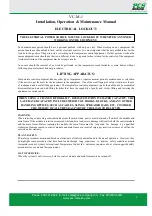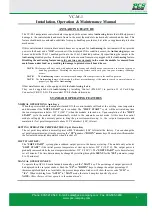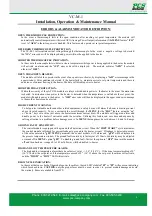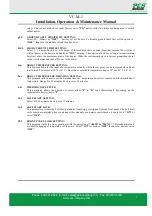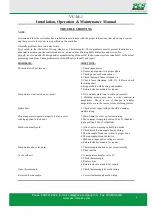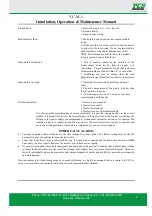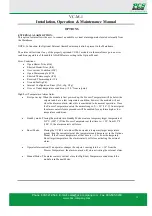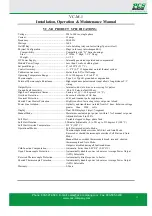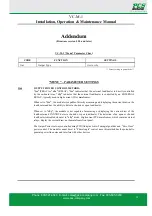
VC-M-1
Installation, Operation & Maintenance Manual
Ground Fault:
1. Heater/Wiring is wet – if so, dry out.
2. Replace heater.
3. Repair heater wiring.
Module blows fuses:
1. Make sure heater size does not exceed module
rating.
2. Make sure this is not the result of a shorted heater
or a short in the tool wiring. Do not replace module
until problem is corrected as damage may result.
NOTE: Blown fuses are not caused by the module,
they are caused by an outside factor.
Temperature Oscillation:
1. This is usually caused by the location, or the
thermocouple being too far from the heater it is
controlling. Proper procedures dictate that the heater
& thermocouple should be within 1/2” of each other.
2. Oscillation can also be caused when the melt
temperature is significantly above or below the set point.
Temperature too high:
1. Normally this is caused by heat from adjacent
zones.
2. The melt temperature of the plastic is hotter than
the set point for the zone.
3. Thermocouple may not be wired to the same
control module as the heater.
No heat indication:
1. Heater is not connected.
2. Heater is too small.
3. Heater is burned out.
4. Heater is too far from thermocouple.
It is also possible something has occurred electrically to upset the microprocessor in the control
module. It indicates that there is more interference in the power line to the control system than the
filtering in the power supply can accommodate. A random occurrence is not cause for concern. The
solution usually is to connect the controller as close to the electrical service supply as possible, and
not to the molding machine, where motors, solenoids, etc. can cause interference.
OTHER FALSE ALARMS
•
You may experience false alarms due to the time settings of certain options. The factory settings may not be the
proper setting for your particular zone characteristics.
•
Zones that heat slowly may need extended time for open heater and shorted thermocouple detection
(tOh)
.
Conversely you may want to decrease the time for zones that heat too rapidly.
•
If you are in a situation where mold changes are frequent and you do not want to take the time to adjust these settings
to the mold characteristics, you can set all the settings to the highest level or in some cases turn them off. However,
this will substantially reduce the control module’s many diagnostic benefits and its ability to prevent heater runaway
and mold damage.
If an instrument is not functioning properly or needs calibration, we highly recommend that you return it to PCS for
service. In most cases your module will not be correctly repaired at other facilities.
Phone: 800-521-0546 E-mail: sales@pcs-company.com Fax: 800-505-3299
www.pcs-company.com
9


